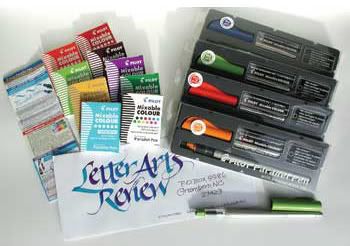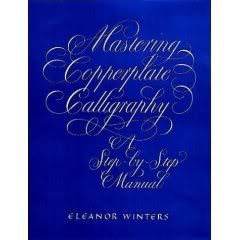
I can't say enough good things about the Pilot Parallel pens. Instead of having a split nib typical of most calligraphy pens, the Parallel pens have two flat parallel (hence the name) plates through which the ink is put on paper. The different sizes are usually sold separately, unless you can find a dealer who sells them as a group. The price for each pen usually runs between $14 and $18 US, depending on the dealer.
They come in four sizes of nibs: 1.5, 2.4, 3.8, and 6.0 mm. Each pen comes with a black and a red ink cartridge and an ink bladder. There are 12 available ink colors, and the colors are rich and flow well from the pen. The black ink is a nice solid black, not like a grayish, washed-out black you get with many cartridge pens. The other colors are just as vivid.
The first time I used a Parallel pen, I was in Heaven. The nib travels over the paper with almost no effort, and without all of the skips, bumps, and jagged edges that are typical of a lot of pens. It feels almost like writing on the smoothest piece of ice. And everyone I show this pen to "oohs" and "aahs" over how easy it is to use and how beautiful the results are.
Another feature that I love about this pen is that the ink is mixable. If you fill two pens with two different colors of ink and touch the nibs together, you can do all kinds of fantastic stuff. Experiment to your heart's content! This is only the beginning:

I hadn't found an affordable, GOOD cartridge pen until I bought my first Pilot Parallel. Of course, I still use my pencils and calligraphy markers for practice, but I only do my professional work with my Parallel pens, the best pens on the market!
Photos from John Neal Books and Schrader Kunst & Hobby respectively.

